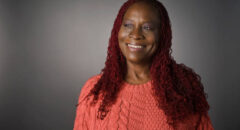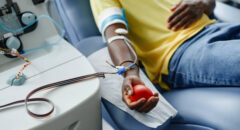
Growing up with sickle cell disease may seem like a never-ending battle. It can get rough, from constant blood transfusions to the overwhelming fatigue you feel daily. But, by the end of this article, you will have an idea of what to expect, along with some tips on fighting it.
RELATED: Sickle Cell Disease and Blood Transfusion: What You Should Know
At What Age Will You First Notice Sickle Cell?
Although sickle cell is present at birth, most infants will start to show symptoms around five or six months. Parents may notice that their children’s hands are slightly more swollen than usual, and their eyes show a hint of yellow, indicating jaundice.
Ouch! That can be hard for a newborn, but parents can act fast and make most of the pain instantly disappear. Doctors can introduce many forms of antibiotics and vaccinations to help fight the chronic disease.
Early detection is super important, so make sure your newborn gets all the tests run on them before you leave the hospital. In fact, if doctors catch the disease early, there is a 90 percent chance that sickle cell patients will live well into adulthood.
RELATED: Day 1: Just Been Diagnosed with Sickle Cell Disease
How Does Sickle Cell Progress As You Get Older?
Teenage life is already hard enough with high school, puberty, and making friends, but now you have to add on a debilitating illness? If you thought you felt sleepy as a teen before, those with SCD experience more fatigue than the average adolescent child.
However, it doesn’t have to be like that as long as you keep your spirits up and eat healthily. Recent studies show that good health practices help those afflicted with the challenging disease.
So go out there and join a tennis club or play pickup basketball if you don’t want to be the teenager who misses out on the fun years in your life. Don’t go too crazy, though, because you’ll need to save some of that fun for adulthood.
The average Black American adult with sickle cell disease can expect more fatigue, jaundice, and swelling. If your symptoms become worse, make sure to report this to your doctor.
How To Make Growing Up With Sickle Cell Easier
During their sickle-cell Journey, Black people can rely on the strong family dynamic to get them through the rougher patches. Sickle cell disease may be debilitating and chronic, but the uplifting, joyous, and sometimes healing love you get from family makes it all better.
John Hopkins published a story in 2019 about a boy named Desmond, who was born with the severe disease. With the help of the medical facility and his loving family, Desmond made it to adulthood.
Desmond’s mother, Shantrella, did not know how to deal with it or what she could do about it.
“I didn’t know anything about it, but I read that book cover to cover, and I joined support groups,” Shantrella remarked. The formative years of Desmond’s life were the hardest, but they persevered with patience and love.
Desmond required quarterly blood transfusions as SCD riddled the first 5 years of his life with hardship. The article says that Desmond started on a track toward better living once Shantrella found the Johns Hopkins Sickle Cell program.
RELATED: 8 Ways To Live Your Best Life With Sickle Cell
Life Expectancy
Deborah Lubeck and colleagues found that the average life expectancy for newborns diagnosed with sickle cell is 54 years old. The average life expectancy for a Black American without sickle cell disease is 73 years.
As the numbers state, the condition can take off almost 20 years of a person’s life. However, with the constant advancements in science, health, and fitness, that life expectancy number may increase in the future.

Medically Reviewed By:
Dr. Brenda Faye Merriweather
Dr. Brenda Merriweather is a Clinical Nurse Specialist who recently earned her Doctorate of Nursing Practice from Walden University. With a deep passion for improving care for individuals with Sickle Cell Disease, she has held several key roles in prominent healthcare institutions, including Baptist Health System, Vanderbilt University Medical Center, Johns Hopkins University, and the National Institutes of Health.









